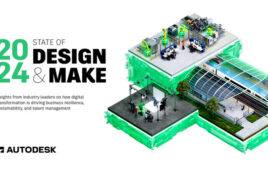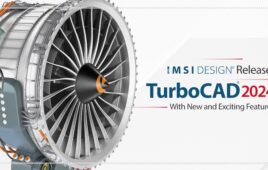The second version of VxScan, a proprietary data acquisition program, includes improvements and additional functions for all of the Handyscan 3D line of scanners. Its Automatic Multiresolution function now includes Decimate Triangles slider, a curvature recognition algorithm for automatically reducing a mesh resolution on flat areas while keeping a higher resolution mesh on complex and detailed surfaces. This function also produces lighter STL files.

In version 2. of VxScan, a curvature recognition algorithm automatically reduces mesh resolution on flat areas and keeps a higher resolution mesh on complex and detailed surfaces.
There are several enhancements to the program’s surface reconstruction, including:
– Improved surface boundaries recognition and reconstruction
– Improved manual multiresolution

Other enhancements to this program include surface boundaries recognition.
– Optimal surface reconstruction (quicker Stop Scan and Load Session)
– Redesigned spike filter to improve details/noise differentiation
– Defining volume position manually (position and angle)
– Redesigned Optimize Surface algorithm for more efficiency
The program is compatible with all major operating systems, including Windows XP 32 bits, Windows Vista 32 bits, and Windows Vista 64 bits. In 64 bits, there is no more memory limit and improved performance compared to similar hardware running in 32 bits.
Other features include a new Lock Zoom function that lets you zoom on particular details while scanning, redesigned live surface rendering, better lighting and shading, and a quick
dynamic rendering mode.
The VxScan program lets you have five 3D viewer control modes, save scan parameters and keep them as default, and change colors. Moreover, v.2 has improved positioning and an enhanced Edition Mode, as well as a feature that lets you delete facets permanently, and not just send them into the Recycle bin.
Creaform
www.creaform3d.com
:: Design World ::
CAD tips, Primitives
Here are some tips on how to better think about and work with 3D geometric primitive shapes.
Operator defined primitives
Very complex shapes can be created by combining primitives through the use of Boolean Operations discussed. The resulting complex solid can then be saved, and treated as an operator defined primitive.
Dr. Richard Lowrey, Mechanical CAD Consultant
A primitive eye
A primitive eye for modeling is a skill to be nurtured and developed over time. Given the same geometric part, a process engineer and a traditional CAD designer would each see the part in terms of the manufacturing processes required for production and the parts geometric entities such as edges and surfaces. A solid modeling designer however, would also see and recognize the basic shapes or primitives required for the part’s construction. Don LaCourse, Editor, 3DCADTips.com
Primitive productivity
There will be many ways of constructing the same part. Maximum productivity is gained by determining the least number of primitives required and their combining sequence for overall construction.
Don LaCourse, Editor, 3DCADTips.com
Thinking in shapes
A benefit of thinking in shapes (primitives) is that you begin to think more in terms of “how would I make this part.” Your manufacturing people will love you for this. When you think about it, most machining operations deal in basic shapes, especially milling and drilling. Think of using primitives to build tools to be used in shaping your base solid. George E. Mock, Mechanical Engineer
This material is courtesy of Don LaCourse, Editor, 3DCADTips.com. More tips are available on www.designworldonline.com
Filed Under: Data acquisition + DAQ modules, ENGINEERING SOFTWARE





Tell Us What You Think!